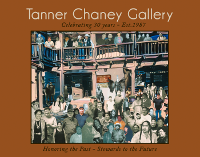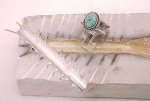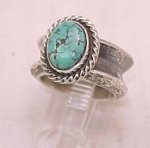Tufacast Demonstration
The craftsman chooses a block of sandstone or tufa (volcanic rock), cuts the rock in half, and grinds the surface smooth. The rock is now ready for him to carve.
Depending on the intricacy of the pattern, the silversmith can spend from several hours to a day carving the "mirror" image of the piece of jewelry he intends to cast. He also carves vent lines to channel air and a funnel in the stone, then blackens the stone with smoke to keep the molten silver from sticking to the mold.
Traditionally, both faces of the stone are wired together, then the molten silver poured. Contemporary smiths use a sheet of metal over the carved stone. The result is a rough casting that needs trimming, filing, shaping, and polishing into a finished piece of jewelry.
Cast jewelry embodies hours of solitary painstaking work by the silversmith. On average, the craftsman can produce no more than two casts before a tufa mold wears out.
Most of today's casting is done using a concrete and oil mold which allows the craftsman to create a greater number of castings. Inexpensive machine-made spincast versions of the hand castings are also made and should not be confused with true handmade castwork. True handcast pieces (like the bracelets by Aaron) can be discerned by the small imperfections on the underside of a piece (these imperfections rise above the plane like tiny grains). The backs of machine-made or spincast pieces show flow lines or streak marks created by the spincast cooling process.







